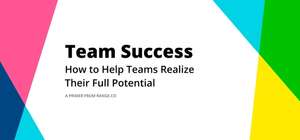
This article was originally published in Quartz at Work on December 1, 2017.
In 1967 Mel Conway proposed that organizations inevitably produce systems that are reflections of their communication structures. A company like Google, which historically had a very open and organic culture, will produce open but somewhat inconsistent systems. A company like Apple, which is more uniform and controlling, will produce more neatly integrated, but restricted systems. Differences that are exemplified in the Android and iOS ecosystems.
This phenomenon is now gospel and companies are starting to organize themselves with user needs and software interfaces in mind.
I propose a corollary to Conway’s Law:
Organizations are shaped by the software they use.
An organization’s culture is defined by how people interact with each other and is governed through processes, social norms, and reward systems. More and more of these interactions are facilitated by software. And if we want to ensure our culture evolves in a direction we like, leaders, managers, and workers need to intentionally consider how we’re using software.
We need to look at not only the functional aspects of software, but at how it is shaping our behavior.
Pathetic dots
When the web was young, Laurence Lessig wrote a book titled Code and Other Laws of Cyberspace. In it, he proposed the idea that computer code could regulate behavior in much the same way legal code does. More generally he claimed that we humans — who he called “the pathetic dots” — are regulated by four forces: Law, Norms, Markets, and Architecture.
Take speeding as an example. It is illegal to drive too fast (Law); if you are caught you are fined. Yet people still regularly exceed the speed limit. We can apply extra forces to help shift people’s speeding behavior by adding speed bumps, chicanes, or removing lane markings (Architecture), or by making speeding socially unacceptable] (Norms).
In organizations, software systems provide a form of architecture and they have already inspired multiple shifts in work behavior: uncapped email inboxes, threaded emails, collaborative document editing, and realtime chat, to name just a few. Slack has been a huge success partly because it shapes behavior in a way that helps people feel better about their work environments. It introduces a level of levity and whimsy that encourages people to bring their whole selves to work, something absent in otherwise sterile enterprise tools. And it provides a sense of empowerment and agency through seemingly simple design choices, such as allowing anyone to create a channel.
In the same way mass transit can unlock the economy in a suburb, tools can unlock new processes, new ways of interacting, and potentially even new levels of cognition.
But much of the progress to date has been emergent and reactionary. If we know architecture can influence culture and behavior, and we know software in certain contexts acts as architecture, can we design a new generation of enterprise tools that helps solve the perennial issues of bias, inclusion, and creativity at scale?
There’s an app for that
There’s a rising skepticism of the earnest hubris that emanates from Silicon Valley: The idea that code is king and tech can solve all the world’s problems. And rightly so. Tech news in recent years is rife with stories of naiveté, insularism, and misplaced good intentions.
But, we don’t question the impact technology has in other spheres: that Twitter’s harassment problems are baked into its design, that online ads change the nature of content production, or that Facebook’s filter bubble can affect elections and your emotions. So why is it so hard to believe that software can make our workplaces better, help reduce bias, encourage people to treat each other better, or can create space for deep cognitive work?
The reason people find it hard to believe that technology can play a role in shaping work culture for the better is, of course, that software can’t solve all problems. But also, it’s that the type of problems we’re seeing in contemporary organizations requires diverse teams to solve, and there’s a growing distrust in Silicon Valley’s ability to look beyond its own borders to society at large.
Trying to positively shape work culture won’t work unless we listen to people outside of tech, and draw on the wealth of research from fields such as organizational design, relational psychology, and cognitive theory.
Tip of the iceberg
The concept of shaping behavior through technology is already being explored in the field of cognitive behavioral therapy. A project called WoeBot for instance, provides users with a “choose your own adventure self-help book.” Its bot checks in on you via Facebook Messenger and provides a form of talk therapy. Another, from a company called Big Health, provides a “virtual professor” that promises to solve your insomnia. In a clinical study, their app helped alleviate depression/anxiety in 68% of patients.
You can imagine similar tools oriented towards solving organizational issues or democratizing the type of coaching usually only reserved for executives. These tools don’t need to work as well as human therapists or coaches, because they are ever-present, and the effects of small nudges compound over time.
Early examples of these tools already exist. One called Crystal Knows guides users through a personality assessment, offering insights about their communication and work styles. Based on those insights, its plugins for Gmail, Calendar, and Salesforce coach you to adjust your communication style to better fit the recipient. If you were to email me, for example, it would suggest you keep emails to three sentences or less, and to get to the point quickly…
ATS systems such as Greenhouse and Lever provide ways of setting up structured feedback for interviewers. Simply moving from free-form text boxes to focused prompts has been shown to help reduce implicit biases from affecting hiring decisions.
“We shape our buildings; thereafter they shape us” — Churchill
Amazon is a company known for ruthless efficiency, and its culture has a reputation for being harsh and unforgiving. After bad press in 2015 and following internal pressure to change, the company started to look for ways to have the best of both worlds: How can they continue to push hard and be successful, but without leaving a trail of collateral damage?
An Amazon employee recently told me that the company had added a section to its company directory that is titled “What do you like to do outside of work?” Bezos and a vanguard of VPs led the way, sharing one or two sentences about their personal life, modeling the vulnerability and transparency they hoped would help correct aspects of their culture that were becoming toxic. And crazily, it seems to be working.
The Amazon employee I spoke with told me that meetings have become more congenial and emails less fraught. “I think this simple change has had a humanizing effect similar to a team happy hour, at scale,” he said. “It’s easier to remember that an eight-character company login number is a person with interests and feelings, beyond their job responsibilities.”
If that’s the power of a well-placed text box, imagine the possibilities if we apply a humane lens to all of our corporate tools. This is software as architecture; changing our behavior.
As software becomes more and more intertwined into our work lives, it is inevitable that it will continue to influence the way we work. Company leaders need to start paying attention to how software is shaping culture, in the same way they look at benefits, office layouts, and reporting structures.
But more importantly, software developers need to acknowledge the power they have, and start using it more responsibly.








